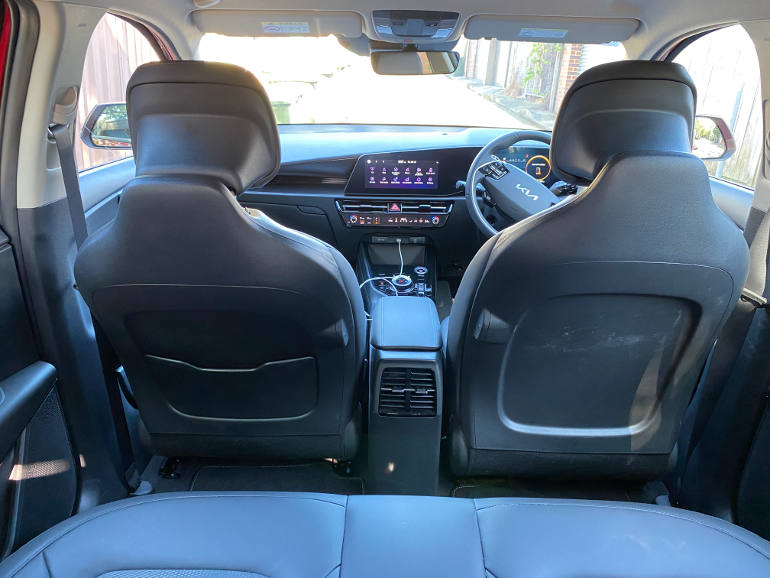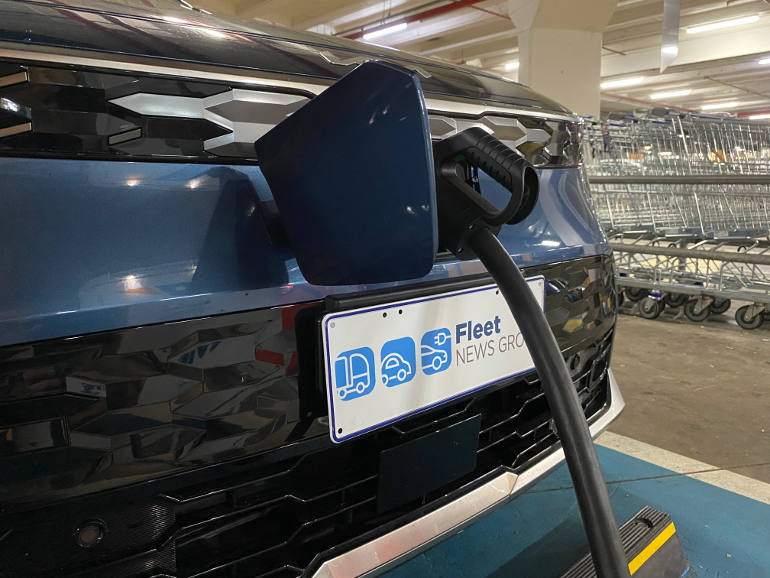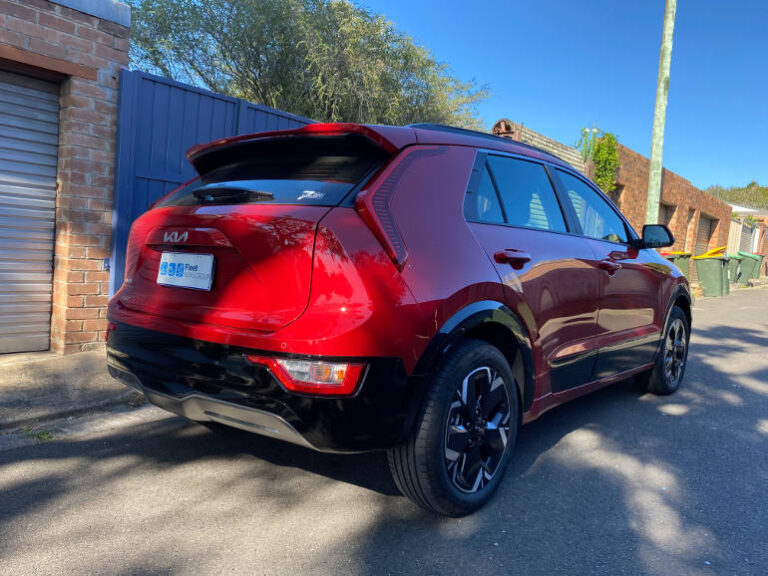I first saw the latest model Kia Niro at the 2022 AfMA Fleet Conference in Sydney. After driving the earlier model, which arrived to Australia late in its model cycle, I was excited to see the new version being launched locally which is available as a hybrid and a full EV.
Since 2022 the Kia EV6 has stolen the limelight from the Niro and become the hero car for Kia, and the one desired by most fleets, however I was keen to drive the all new Niro to see if things I liked in the previous model carried over to the new one.
In a previous review, Rod from the Fleet News Group team has taken the electric Kia Niro to Canberra and back in a day. He was positive about the car, but not as positive about the charging network and his lack of trip planning which made it a long day on the road.
During the two weeks I was driving various models of the electric version of the Niro, I stayed local and assimilated the EV into my normal routine to see if I could adapt our family life to zero emission motoring.
The first thing you notice is the interior space. There’s plenty of room for the driver and passenger which is common in all new cars now, though it was the space for three teenagers in the rear seats that caught my attention.
If you ask the teenagers, they would have preferred two people in the back rather than three, but they did acknowledge the flat floorplan (because there’s no exhaust pipe or driveshaft to the rear) did make the centre seat more bearable.
And I noticed the head room. In the earlier model Niro they designed a version for ride-share fleets that had a higher roofline for rear passengers. It appears the designers have carried this feature over to the latest model which may benefit Uber passengers as well as families.

When reviewing electric vehicles I’ve progressed from the excitement and wonder that was previously a feature of all EV reviews. The smooth, instant and powerful acceleration is now expected (even in a non-performance model) so the ride quality and refinement of the interior finishes that are important.
Another important aspect to consider when reviewing electric vehicles is the technology, and how it all integrates into a seamless package. This is one area where the mainstream manufacturers like Kia are ahead of the new entrants.
Driving the latest electric Kia Niro is similar to driving any other Kia in the range. The driver interfaces, safety technologies and instrument displays have been designed to operate in harmony, as expected, and consistently. So you get a well built vehicle that also has an electric powertrain.
I started with the GT Line version of the Niro which would normally be my preferred pick of the range. But I was disappointed. It was missing some of the features I’ve come to expect from the GT Line models. In the EV6, the GT Line is my pick. However in the Niro the electric seats were missing my favourite accessory, a 2-Position Memory setting for the driver.
The GT Line was also missing wireless Apple CarPlay but it was available on the lower specification S version. So for approximately $75k driveway, I wanted more. Or I wanted to pay less.
I got everything I needed for a fleet or family electric car in the lower priced S model. It didn’t pretend to punch above its specification level. Though for approximately $70k driveaway, I definitely wanted to pay less.
Driving range
The latest model Kia Niro comes with a 64.8 kWh battery which will give you a range of 460 (WLTP). The energy consumption (fuel efficiency) is claimed to be 16.2 kWh per 100 kilometres.
Driving around the city on short trips the energy consumption was higher (closer to 19kWh/100km) however the range felt greater because of the continuous use of regenerative braking. I didn’t drive enough to fully test the range in varying conditions but I would be confident of achieving the claimed 460km.
Charging time
This the front line for EV manufacturers and soon to be the main comparison point in car reviews. How fast can I jam electricity back into the battery? Battery size is important for range, but the ability to accept super fast charging will be the defining factor when looking at similar priced models. Especially for fleets that don’t want drivers waiting around at public charging sites.
The Kia Niro isn’t the fastest in the Kia range but miles ahead of the first generation EVs. With a 50kW DC charger it will take an hour and five minutes to get from 10% to 80%. Using a 100kW DC charger you can get from 10% to 80% in 45 minutes. And this appears to be as fast as it gets becomes a 350kW charger still takes 43 minutes.
Vehicle manufacturers never give figures to reach 100% because the last 20% will be restricted by the battery management system to avoid battery damage and can take just as long as it takes to get from 10% to 80%.

Suitability for fleets
Speaking to many Fleet Managers across the country, the electric Kia Niro has found a home as pool vehicles in several local government fleets.
Feedback suggests they like the ‘normality’ (meaning it’s like a petrol car) of the Niro and with a range of 400+ km it hits a sweet spot for employees not familiar with electric vehicles.






